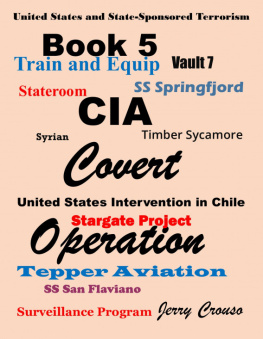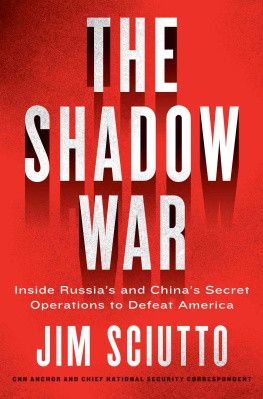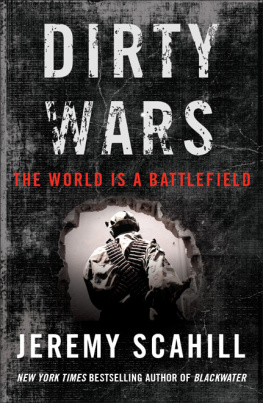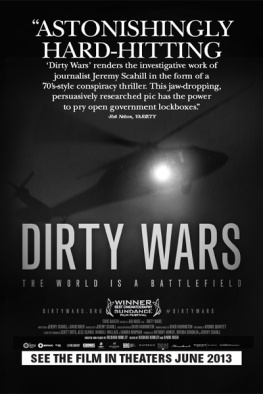

Copyright 2014 Larry Hancock with Stuart Wexler
All rights reserved under International and Pan-American Copyright Conventions. No part of this book may be used or reproduced in any manner whatsoever without written permission from the publisher, except in the case of brief quotations embodied in critical articles and reviews.
Library of Congress Data Is Available
ISBN 978-1-61902-357-4
Cover design by Charles Brock, Faceout Studios Interior design by Neuwirth & Associates, Inc.
Counterpoint Press
1919 Fifth Street
Berkeley, CA 94710
www.counterpointpress.com
Distributed by Publishers Group West
10 9 8 7 6 5 4 3 2 1
If we, the CIA are going to try something like this again, we must be absolutely sure that the people and the Army [in the targeted country] want what we want. If not, you had better give the job to the Marines.
KERMIT ROOSEVELT JR.,
senior officer CIA Middle Eastern Division,
White House debriefing remarks on Iranian
coup/Operation Ajax, 1954
Contents
Hot war and Cold War, covert operations and shadow warfare. Some of it public, some of it secret, and some of it very real but ostensibly deniable.
The hot side of the Cold War was always in the news. In the 1950s the Korean conflict saw a large American military contingent deployed as part of a UN force to the Korean peninsula, to block the subjugation of a democratic south by the communist north. American combat personnel made up the vast majority of the 341,000-man UN force, a force coming from some twenty-one nations. And by the time of the final truce, American forces had suffered more than 125,000 dead and wounded in combat. There were reporters on the ground, combat photography in the newsreels, and the veterans returned to write extensively about their experiences in Korea.
Through the 1960s and into the 1970s, the Vietnam conflict was covered as another instance of communist territorial aggression, combat pitting the communist north against the anticommunist southwith the American fear that countries across Southeast Asia could begin falling to communism like dominoes. That combat was the first to be covered on the nightly television news and Americans watched that very hot war for almost a decade. Vietnam escalated to full-scale warfare including Army, Air Force, and naval deployments. The conflict lasted far longer than Korea, involving over half a million American personnel. Combat in and around Vietnam left far more than twice the American dead and wounded than that in Korea. Because the American effort in Vietnam ended in defeat and public embarrassment, it took longer for even individual combat stories to make it into print. Still, at the time, the hot side of the Cold War seemed easy enough to understand, win or loseeven if the complex ideological and political agendas in play required some years for a more accurate and penetrating historical analysis.
The cold side of the Cold War seemed equally visible, focused on nuclear confrontation with the Soviet Union; immediately following the Second Word War the U.S. Army Air Force prepared contingency plans for an atomic strike on the Soviets and ultimately, with both sides having nuclear arsenals, the strategy of mutual assured destruction (MAD) emerged.
During most of the Cold War, secretsmilitary secretswere not a bad thing; they were accepted as a fact of life. The country was only a few years out of a bloody world war and military security was engrained in the population. Still, there was lots of popular media coverage of the military. The Strategic Air Command (SAC) was omnipresent during the Cold War era. Books such as SAC: The Strategic Air Command, published as early as 1958, gave extensive details on the force including the numbers of both its personnel and its aircraft.
The North American Air Defense Command The Air Force was also willing and eager to actively promote its atomic defensive capabilities. In 1957 a U.S. News & World Report interview with the Air Defense Commands chief, General Earle Partridge, discussed the use of atomic weapons in air defensethose atomic interceptor missiles would come to include warheads ranging from 1.5-kiloton missiles (launched from F-89 jet interceptors) to the 6.5-kiloton warhead (approximately half the size of the Hiroshima bomb) on high-altitude Bomarc antiaircraft missiles deployed around major American cities.
There certainly were Cold War secrets, matters not necessarily related to weapons development or defensive capabilitiesand not shared with the press. SACs first known nuclear weapons accident was in February 1950, when a B-36 bomber simulating a nuclear attack under artic conditions experienced mechanical problems and severe icing and was forced to ditch off the coast of British Columbia; its Mark IV nuclear bomb was jettisoned from eight thousand feet and reportedly the high explosives triggers detonated with no nuclear explosion. That accident was only the first of that year, with crashes in the Manzano Mountains east of Albuquerque (no damage to the weapons on board; the crash was following takeoff), the forced jettisoning of a nuclear bomb over the St. Lawrence River in Canada, and the crash during takeoff of a B-29 with an atomic weapon on board at an air base outside San Francisco. That aircraft was carrying weapons to be deployed in possible support of the Korean action and the crash not only killed twelve of the twenty crew members but also the following explosion of the bombs conventional explosive triggers killed another seven people on the ground and produced significant radioactive contamination on the airfield.
In 1958 a fully armed B-47 caught fire on the runway at a SAC base in Morocco and produced a considerable amount of local contamination. In 1957, a nineteen-megaton hydrogen bomb was accidentally dropped in an uninhabited area near Albuquerque; the conventional explosives detonated, producing a twelve-foot-deep crater some twenty-five feet across; some radioactive contamination did result. Later years would see accidents in 1959, 1960, 1961, 1964, 1965, and 1968. As with the previous incidents, some contamination occurred, some bombs were recovered, some were not, and SAC servicemen lost their lives. Almost all these accidents received little or no press at the time and some were only revealed decades later.
The American public also knew little of such military incidents over our and our allies territory, including the closely held secrets of Air Force reconnaissance, conducted not only in international airspace and waters, but directly over Russia itself. In July 1960, Time magazine headlined the return of two Air Force servicemen who had survived after their RB-47 aircraft had been downed by a Russian fighter in international waters, over the Barents Sea, off Murmansk. Only two of the six-man crew survived, spending seven months in Lubyanka prison before being returned to America. The incident was tragic and definitely served to harden public opinion towards the Soviets.
But there was a good deal more to the overall picture of American aircraft around and over Soviet territory than made it into the
Next page








